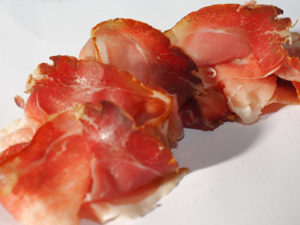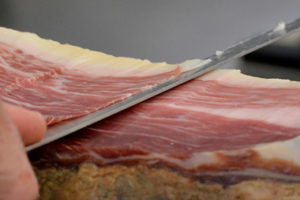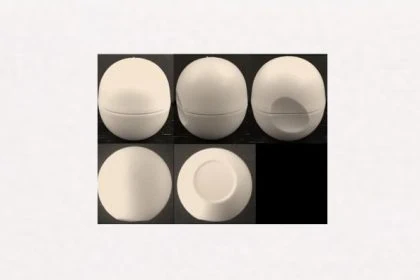Whether Black Forest ham has to be cut and packaged in the Black Forest has to be decided by the national German court. Today’s ruling by the European Court of Justice is part of a battle that lasted 13 years over the packaging issue for foodstuffs protected by the EU designation of origin “Protected Geographical Indication”.
Packaging dispute by many instances
 The name “Schwarzwälder Schinken” (i.e. Black Forest Ham) has been registered since 25 January 1997 as a geographical indication under Regulation (EC) No 123/97 in accordance with the procedure laid down in Article 17 of Regulation (EEC) No 2081/92 for ‘meat products’ at the request of the Schutzverband der Schwarzwälder Schinkenhersteller (Association for the Protection of Black Forest Ham Producers). In 2005, the Schutzverband applied to the DPMA for the specification of the protected designation “Schwarzwälder Schinken” to be amended in order to ensure that in future commercial slicing and packaging also took place in the Black Forest.
The name “Schwarzwälder Schinken” (i.e. Black Forest Ham) has been registered since 25 January 1997 as a geographical indication under Regulation (EC) No 123/97 in accordance with the procedure laid down in Article 17 of Regulation (EEC) No 2081/92 for ‘meat products’ at the request of the Schutzverband der Schwarzwälder Schinkenhersteller (Association for the Protection of Black Forest Ham Producers). In 2005, the Schutzverband applied to the DPMA for the specification of the protected designation “Schwarzwälder Schinken” to be amended in order to ensure that in future commercial slicing and packaging also took place in the Black Forest.
After all, a northern German company does the same – that cuts no ice with the Black Forest Ham Producers’ Association. Since 2005, it has therefore been trying to push through a more far-reaching specification of the regulations, according to which smoked meat must also be sliced and packaged in the Black Forest. For 13 years, a legal battle has been waged over this, which was decided today before the ECJ. The Federal Patent Court (BPatG) had taken the view that the general conditions for approval of an amendment to the specification had been met by the ECJ ruling on Parma ham in 2003 (see below, C-108/01). The Federal Supreme Court (BGH) had complained that there was no product-specific justification for this and in 2014 annulled the decision of the BPatG of 2011.
ECJ sees quality and authenticity guaranteed by packaging
 The ECJ recalled the judgment of 20 May 2003, Consorzio del Prosciutto di Parma and Salumificio S. Rita (C-108/01, EU:C:2003:296). It stated that controls outside the production area would provide fewer guarantees of the quality and authenticity of the product in question than controls carried out in the production area in accordance with the procedure laid down in the specification.
The ECJ recalled the judgment of 20 May 2003, Consorzio del Prosciutto di Parma and Salumificio S. Rita (C-108/01, EU:C:2003:296). It stated that controls outside the production area would provide fewer guarantees of the quality and authenticity of the product in question than controls carried out in the production area in accordance with the procedure laid down in the specification.
The EU regulations (Article 4(2)(e) of Regulation (EC) No 510/2006, also Article 8 of Regulation (EC) No 1898/2006) must be interpreted as meaning that the requirement to present a product covered by a protected geographical indication in the geographical area in which it is produced is justified where it constitutes a necessary and proportionate means of preserving the quality of the product or ensuring its origin or the control of the specification for the protected geographical indication. Whether each is a necessary and proportionate means is a matter for the respective national courts to decide.
Judgment follows previous case law
The groundbreaking judgments of the ECJ in the cases “Proscuitto di Parma” and “Grana Padano” (judgment of 20.05.2003, Rs. C-108/01 and C-469/00) already interpreted the packaging question restrictively and allowed the processing steps of slicing and packaging by specifications in the specification only in the country of origin. Parma ham must not only be produced in Parma, it must also be sliced and packaged there. Spicy, this led to a Chinese interpretation of the judgment in the case of Parma ham. In 2011, the German newspaper Hamburger Abendblatt reported that a city called Parma had been founded in China without further ado – and that the matching ham had been brought to the domestic Chinese market.
Would you also like to protect your brand or trademark?
Then please do not hesitate to contact us. Our patent attorneys and attorneys at law are experienced and highly qualified in all areas of intellectual property law, both nationally and internationally.
Request your call-back without any obligations!
Sources:
Pictures:
MarkusHendrich /pixabay.com / CCO License | Ben_Kerckx /pixabay.com / CCO License








Leave a Reply